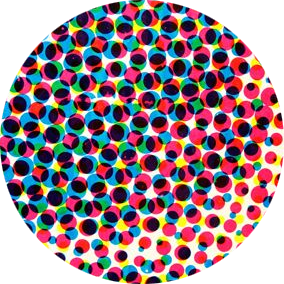Men, Monsters, and Marvelous Melodrama in Fantastic Four #51

In Jack Kirby & Stan Lee’s Fantastic Four #51 (1966), no one punches anyone and few characters use their powers. There’s no world-ending threat and no one defeats a villain or even fights one. Which is precisely what makes it one of the best single issues of the #SilverAge. 1/12

Everything that happens in Fantastic Four #51 happens because Ben Grimm is sad. He’s specifically sad about being the Thing. In other words, he’s sad about being a superhero who fears he’s a monster. Thus, the inciting incident is an existential crisis about identity. 2/12

Within a genre that celebrates masculine aggression, the Thing’s utter despondency remains unusual—and striking. As does Kirby’s art, which uses framing, posture, and rain as symbolic (and melodramatically excessive) tears to heartbreakingly humanize a lump of orange rocks. 3/12


Sue Storm is mired in gender tropes; her priorities are family dinner & begging men to stay safe. But her interactions w/ Reed underscore the merging of superheroic action & romantic melodrama. The relationship tension caused by Reed’s own hubris is a central story conflict. 5/12

FF’s genre-mixing is also on display in a subplot where Johnny Storm gets hassled by his new classmates at Metro College and defended by Wyatt Wingfoot, son of a famed decathlete. The coach’s struggle to convince Wyatt to play football is framed as another genuine conflict. 6/12


The domestic conflict is exploded by Reed’s psychedelic journey into subspace, for which Kirby employs a collage splash page. These pages are already impressive, but the tonal shift enhances the sublimity. In the FF’s world, any door can open onto jaw-dropping wonder. 8/12

The next pages chronicle the internal struggle of the nameless “villain,” disguised as the Thing. He realizes his hatred is based on lies. Reed and the real Thing’s selfless heroism—and deep friendship—inspires him to be a hero in turn, plunging into subspace to save Reed. 9/12

The fake-Thing’s sacrifice glorifies Reed & the rest of the Fantastic Four. But it also elicits a remarkable degree of empathy for a supposed villain. Kirby underscores the tragedy with three panels detailing his increasingly small, helpless body disappearing into the void. 10/12

The story concludes with more romantic/familial melodrama. Ben prepares to confront his girlfriend Alicia Masters in his human form, only the suffer the ironic twist of turning back into the Thing. Then Reed and Sue dramatically embrace, and everyone hugs the real Thing. 11/12

Reed’s closing message about facing fate “like a man” is heavy-handed. But as a whole, Fantastic Four #51 is built around more complex relationships, emphasizing tenuous boundaries between men & monsters, heroes & villains, romance & action, comparing different realities. 12/12
